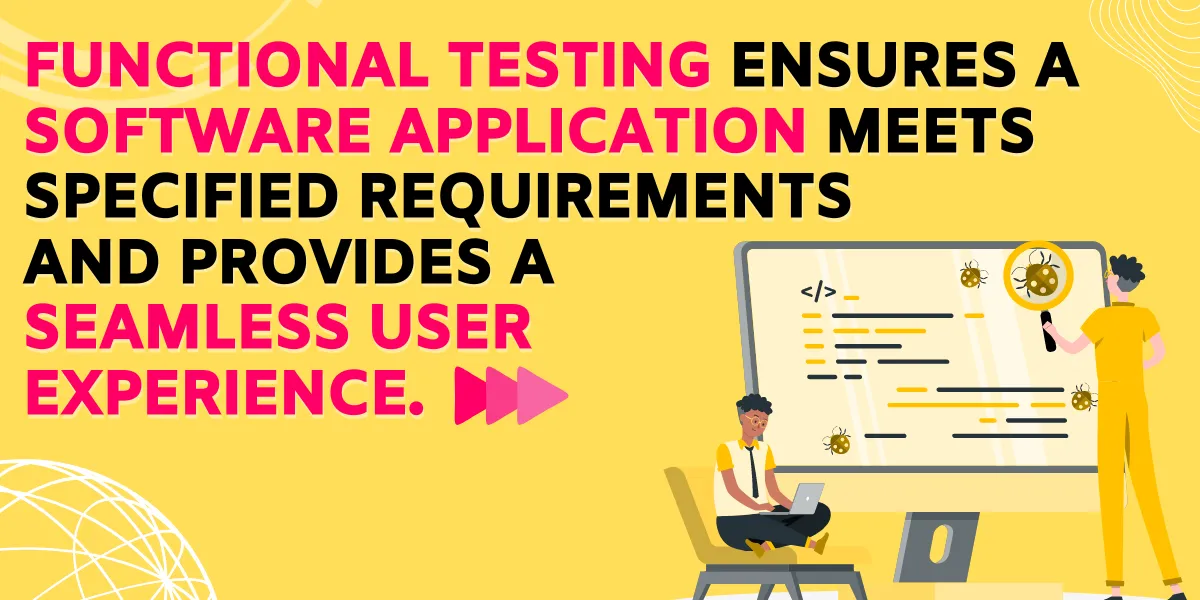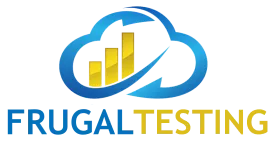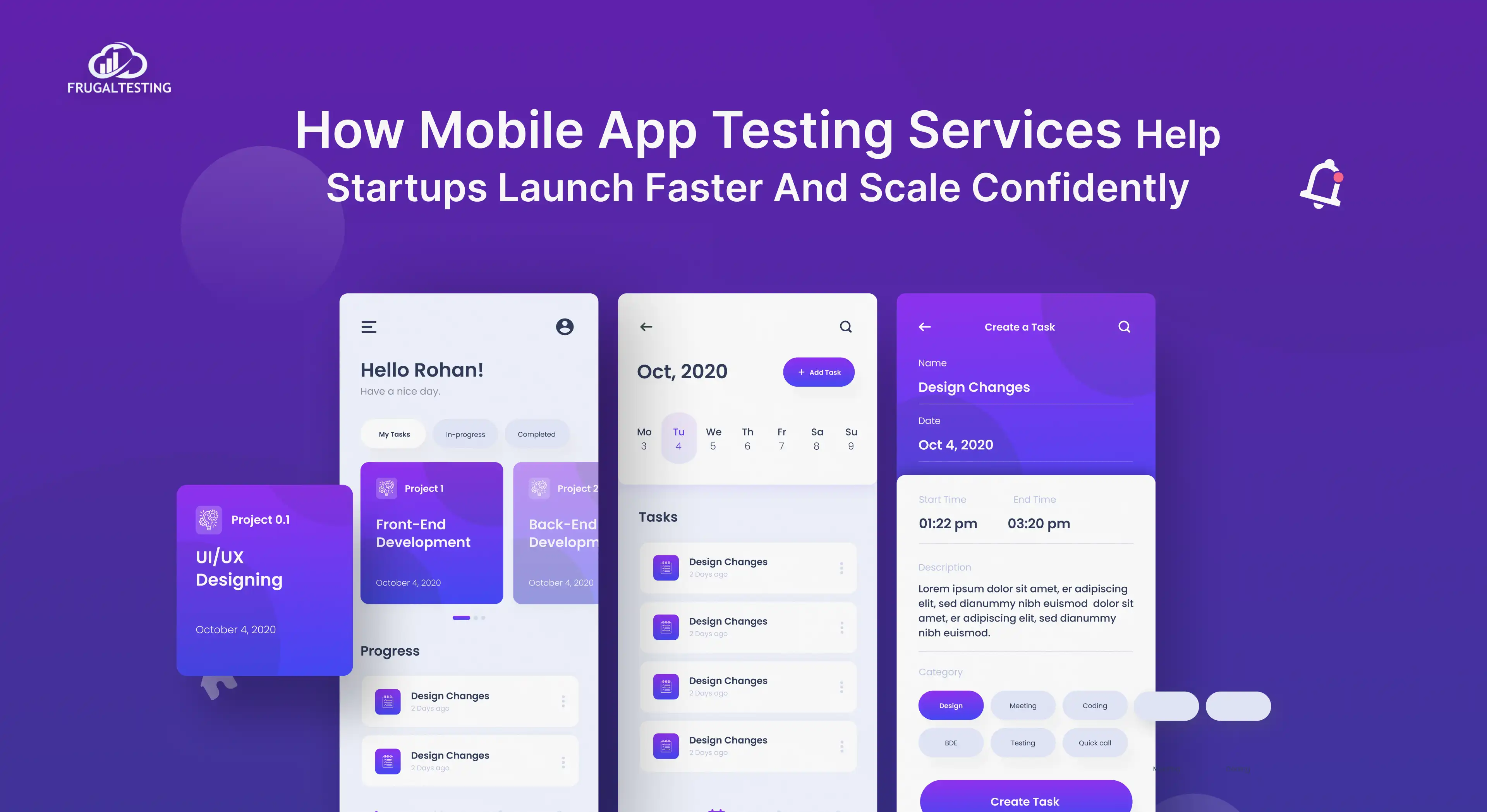You're diving into the software testing world, specifically eyeing functional testing in software testing. You've likely heard the buzz around functional testing and non-functional testing. But what is functional testing?
This blog is your guide.
I'll guide you through the maze of types of functional testing, with practical, functional testing examples to boot.
📌Consider this your wake-up call if you're questioning the need to understand functional testing.
📌Skipping this blog means missing critical insights that could elevate your testing strategies.
📌I delve into the nuances that differentiate functional from non-functional testing, a knowledge gem you don't want to overlook.
Explore the wide array of functional testing types with our comprehensive guide. We break down each type from unit to acceptance testing to its core. Additionally, we delve into the best functional testing tools available, offering insights and recommendations for enhancing your testing strategy.
Discover the best practices in functional testing and refine your approach, regardless of your current level of familiarity.
Dive into the landscape of functional testing with us—missing out is not an option.
What is Functional Testing?
Diving straight into the heart of software quality, let's talk about functional testing. It's the backbone of any testing strategy, ensuring your application does exactly what it should.
Imagine you're the craftsman of a puzzle 🧩functional testing ensures each piece fits perfectly, creating the picture you envisioned.

Testing verifies your software application operates according to your specified requirements. It's like proofreading your novel, ensuring every sentence conveys the intended message without errors.
Why is functional testing important?
Without it, you're navigating a ship without a compass. It's the difference between a seamless user experience and a frustrating digital maze. Functional testing in software testing is not just a step in the process; it's the checkpoint for quality assurance.
Functional Testing Examples can be?
Let's paint a picture with some functional testing examples.
📝Consider a login page. Functional testing checks if entering the correct username and password grants access. Incorrect credentials should rightfully deny entry. It sounds simple, yet it's crucial for security and user experience.
📝Another example could be an e-commerce checkout process. Functional testing examines whether the add-to-cart, payment processing, and order confirmation features work as intended. It ensures the user's journey from browsing to buying is smooth and error-free.
But functional testing doesn't stand alone; it contrasts with non-functional testing, which assesses how the software performs under certain conditions, not what it does.
While functional testing asks if the software can perform a task, non-functional testing asks how well it performs.
What is the difference between functional and non-functional testing?
It's like comparing the blueprint to the foundation of a building. 🛠️📐
Functional testing checks if the software meets specified behaviors or actions. Non-functional testing, however, looks at how well the software performs under certain conditions.
Functional testing is your go-to for verifying specific requirements. Think of it as ensuring the doors open and close as intended in your software house.
On the other hand, non-functional testing checks the strength of the doors and windows against the storm of user traffic and data load.
Non-functional testing Definition
Non-functional testing is essential because functionality isn't the whole story.
.webp)
How fast your application loads, scalability, and security are crucial for user satisfaction. Non-functional testing gives you the full picture, ensuring your software doesn't just work but excels.
Non-functional testing types stretch beyond just performance and security. They include usability, reliability, and compatibility testing, each serving a unique role in polishing your software to shine.
It's about ensuring your software does what it should and does it well under any circumstances
Non-functional testing tools examples
Now, let's talk tools. 🔧
non-functional testing tools examples include LoadRunner for performance testing, Nessus for security assessments, and JMeter for load testing These tools are the magnifying glass that spots the imperfections invisible to the naked eye, ensuring your software's robustness and efficiency.
Different types of functional testing to Explore
Embarking on the journey of functional testing, you'll discover a diverse landscape. The types of functional testing are like tools in a toolkit, each designed for a specific task.
Let's explore together.
-compressed.jpeg)
🔍First up is unit testing. It's like checking each brick for flaws before laying it down. This fundamental type of functional testing ensures that individual components work correctly in isolation.
🔍Integration testing follows, where we see if those bricks, now part of walls, seamlessly connect to form a sturdy structure. It's about ensuring that different modules or services work together as expected.
🔍System testing takes a step back to view the entire building. This ensures the complete and integrated software system meets the specified requirements. It's like the final inspection before opening the doors to occupants.
🔍Acceptance testing is where the future occupants come in. It checks if the software meets their expectations and requirements, giving the final approval.
🔍Regression testing ensures that new changes haven't disrupted the existing functionality. Imagine redecorating a room and ensuring the lights still work as they did.
🔍Smoke or sanity testing offers a quick check-up after changes. It's like glancing over the building to ensure no smoke is billowing from a window before diving deeper.
🔍Exploratory testing allows testers to be the detectives, intuitively exploring the software to uncover hidden issues. It's the creative side of functional testing where curiosity leads.
Understanding the types of functional testing in software testing is crucial. Each type plays a unique role in delivering a quality product.
Without knowing the types of functional testing, one might overlook critical aspects of testing, leading to software that might function but not flourish.
Types of test frameworks in Functional Testing you Should Know About.
Navigating through the world of functional testing, one can't overlook the importance of a robust functional testing framework. These frameworks are the scaffolding that supports your testing strategy, making the process efficient and effective.
What are the types of functional testing frameworks?
Let's break it down.
Each framework offers unique functional testing techniques tailored to different testing needs and scenarios.
-compressed.jpeg)
🏗️First, there's the Linear Scripting Framework. Think of it as a straightforward, step-by-step guide for test execution. Simple yet powerful for small projects.
🏗️Then we have the Modular Testing Framework. Like building blocks, it allows you to create tests by combining reusable modules. It’s all about efficiency.
🏗️ Data-driven frameworks take it up a notch. They separate test data from scripts, making your tests more flexible and easier to extend. Imagine customizing tests without changing the code.
🏗️ Keyword-driven frameworks offer a more abstract approach. By using keywords for functions, they make tests more understandable for non-programmers. It's like translating code into plain English.
🏗️The Hybrid Testing Framework combines the best of all worlds. Tailored to complex projects, it offers flexibility and power, adapting to any testing scenario.
🏗️Behavior-Driven Development (BDD) Frameworks focus on the end-user experience. They use natural language descriptions to define test cases, bridging the gap between technical and non-technical team members.
Exploring these types of test frameworks in functional testing is crucial. Each framework has its strengths, suited for different types of projects and team dynamics. Choosing the right framework can dramatically enhance the effectiveness of your testing process.
So, as you consider your functional testing strategy, remember the framework you choose is more than just a tool. It's the foundation that supports your entire testing structure.
Are these "functional testing best practices" familiar to you?
In the world of software testing, knowing the functional testing best practices can make a significant difference. It's like having a secret recipe that ensures every dish turns out just right. Let's delve into some of these practices.
🌟First off, always start with clear, well-defined objectives. Knowing exactly what you need to test is like having a map in a treasure hunt. It guides every step, ensuring you're always on the right path.
🌟Next, prioritize your tests. Not all tests are created equal. Some are critical to your application's functionality, while others might be less so. It's about knowing which battles to fight first.
🌟Automation testing is your friend, but know when to use it. Automating repetitive tasks can save you time and reduce errors. However, remember that some tests require the human touch. It's about finding the right balance.
🌟Keep your tests simple and focused. A test should verify one thing and do it well. This approach makes your tests easier to write and maintain and simplifies diagnosing issues.
🌟Don't forget to document everything. Good documentation is like leaving breadcrumbs for future you or someone else on the team. It can turn a day-long debugging session into a matter of minutes.
🌟Regularly review and update your tests. The digital world is always changing, and so is your application. Ensuring your tests evolve is crucial for maintaining functional benefits.
🌟Lastly, involve your team. Functional testing isn't a one-person show. Collaboration can bring new insights and help uncover issues you might not have considered.
Embracing these best practices can transform your testing process, ensuring your application meets and exceeds expectations.
So, are these practices part of your testing cache?
Remember, in the quest for quality, every little bit helps.
Discover which "tools for functional testing" are the finest.
The landscape of functional testing tools is vast, with each tool offering unique features to tackle different challenges in software testing. Determining which tools most benefit your projects requires a detailed discussion and debate.
.webp)
✨Selenium is often hailed as the go-to for functional automation testing tools, especially for those who work extensively with web applications. Its ability to automate across different browsers is like having a key to unlock any door in the testing world.
✨TestComplete, on the other hand, offers a more graphical interface, making automated functional testing tools accessible even to those who might not be coding wizards. It's like having a guidebook with clear instructions and visuals.
✨UFT (Unified Functional Testing) brings a blend of GUI and API testing capabilities to the table, serving those who require a comprehensive tool for desktop and mobile applications. It's akin to having a Swiss Army knife in your testing toolkit.
✨Katalon Studio shines seamlessly with its all-in-one approach, blending UI and API testing. For testers looking for a versatile tool, it's like finding a treasure chest filled with exactly what you need.
✨Appium stands out as a pivotal tool for mobile application testing, supporting native, hybrid, and mobile web apps across Android and iOS platforms. Its WebDriver protocol allows for writing tests in various programming languages, offering flexibility akin to having a master key for mobile testing.
Selecting the Right Tool
Selecting the right functional testing tool is a critical decision that can significantly influence the success and efficiency of your software testing efforts. Several crucial factors should meticulously inform this choice to ensure the tool aligns perfectly with your project requirements and team capabilities.
Key considerations include the type of applications you are tasked with testing—whether web-based, mobile, desktop or involving APIs. Each application category presents its unique set of challenges and requirements, making the adaptability of a tool to various testing environments a paramount criterion.
Ease of use is another vital aspect. A tool that offers an intuitive user interface and straightforward setup can drastically reduce the learning curve, enabling your team to hit the ground running.
This user-friendliness should not come at the expense of depth and functionality. The best tools in the market balance ease of use with comprehensive testing features, providing a wide array of testing functionalities without overwhelming the user.
Elevate your testing strategy to new heights with our in-depth exploration of functional testing. From understanding its core types to mastering best practices and discovering the top tools, including the revolutionary role of AI in software quality, this guide has covered everything you need to navigate the complexities of functional testing in 2024.
Ready to take your software testing to the next level? Dive deeper into our resources, refine your approach, and ensure your projects stand out in a competitive landscape.



.webp)

%201.webp)

